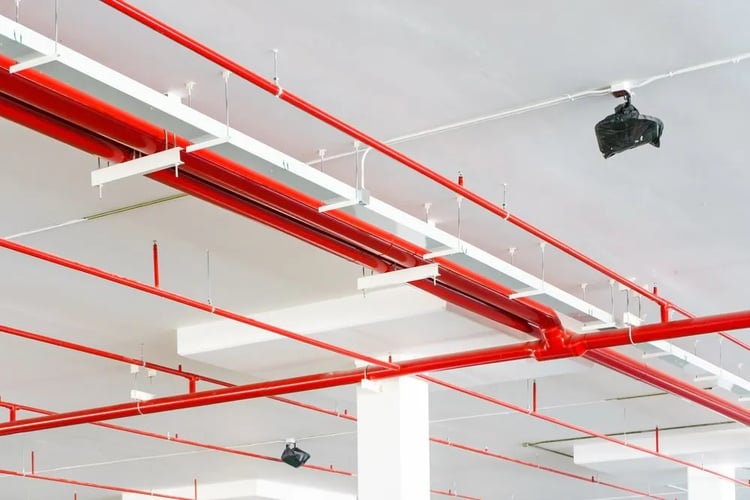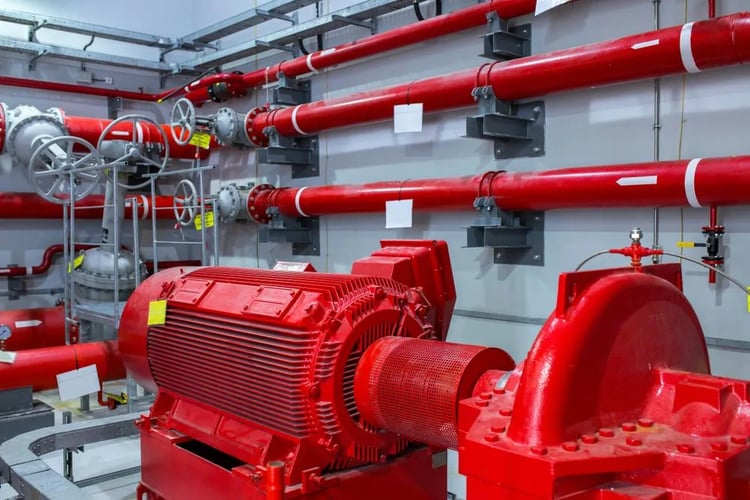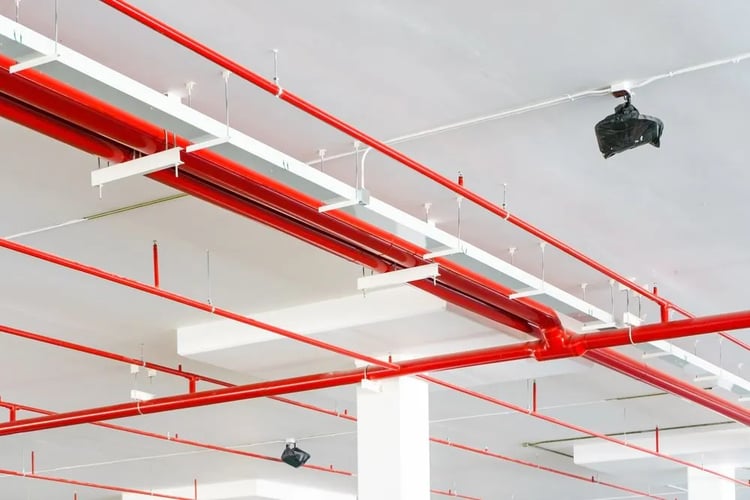Automatic sprinkler systems are one of the most effective fire protection measures you can have in a building. Fire sprinklers automatically respond to localized heat, extinguishing any active flames before they can spread. Contrary to popular belief, fire sprinklers do not spread across an entire floor when they are activated – only those directly above the fire open in response to the heat, and the rest remain closed.
The main challenge for fire protection engineers is to design an automatic sprinkler system that releases sufficient water in the event of a fire, at an appropriate pressure, but without making installation too expensive. Oversized pipes can greatly increase the cost of a sprinkler system, and you also need larger, more expensive pumps to achieve adequate pressure and flow.
Fire sprinkler systems have traditionally been designed based on the piping scheduling method. This approach ensures adequate water flow, but the disadvantage is that many sections of the system end up being oversized. On the other hand, when fire protection engineers use the hydraulic calculation method they can optimize pipe diameters without compromising safety.
Get a professional sprinkler system design for your next construction project.
Here we will discuss the main advantages of designing a fire sprinkler system with the hydraulic calculation method. You can often reduce installation costs by thousands of dollars while still meeting local building codes and NFPA standards. The hydraulic calculation method requires more complex calculations than the piping scheduling method, but you get reliable fire protection at a lower cost. Furthermore, these calculations are no longer a problem thanks to engineering software.
Hydraulic Calculations Save Piping Costs

When engineers use the piping schedule method to design a fire sprinkler system , they select piping diameters based on tables. This is a straightforward method with simple calculations, but its main disadvantage is that the tubes are often oversized.
- Oversizing has a cumulative effect on sprinkler system costs, as all components located upstream must also be sized larger.
- If the branches leading to the individual sprinklers are oversized, you will also need to increase the diameter of the crossover networks and risers.
With the hydraulic calculation method, fire protection engineers can determine the ideal diameters of branches, cross networks and risers. This design method reduces system costs without affecting performance and ensuring code compliance. The hydraulic calculation method can often achieve material and labor savings of more than 20% compared with the traditional pipeline scheduling method. Not only do building owners save money by purchasing smaller pipes; fitting sizes and installation costs are also reduced.
The hydraulic calculation method is also more adaptable as it can be used for any piping material. On the other hand, the pipe scheduling method is limited to the materials available in the design tables.
Hydraulic calculations are not only used to optimize pipe diameters, but also for the overall layout of a fire sprinkler system. With the piping planning method and manual calculations, you can only analyze simple configurations – piping branches and loops. On the other hand, when design engineers use computers for hydraulic calculations, they can analyze more complex piping layouts. This includes network configurations, where there are many possible paths between the water supply and each sprinkler, making the system more reliable.
Hydraulic calculations avoid oversized pumping systems

When the diameters of a piping system increase, larger pumps are also needed to achieve adequate pressure and flow. As you would expect, this adds even greater costs to an automatic sprinkler system. When piping diameters are optimized with the hydraulic calculation method, you can also determine the optimal pump size for the sprinkler system.
Remember that a larger pump also draws higher current, which means you must increase the capacity of the associated pump. electrical installations . You need to increase wiring and conduit sizes along with circuit breaker ratings, further increasing the cost of your project.
To reduce the cost of an automatic sprinkler system, it is necessary to optimize the sprinkler head layout and piping sizes. Excessive sprinklers and oversized branches increase the cost of all other system components: cross networks, risers, pumping systems and electrical installations. With the hydraulic calculation method, you can eliminate the costs associated with oversizing.

